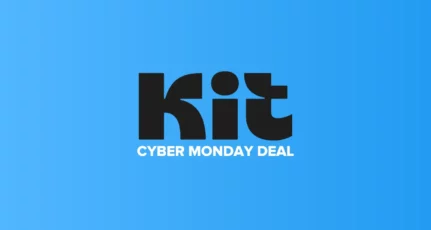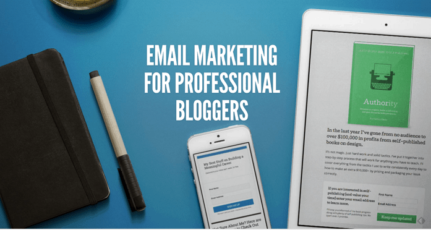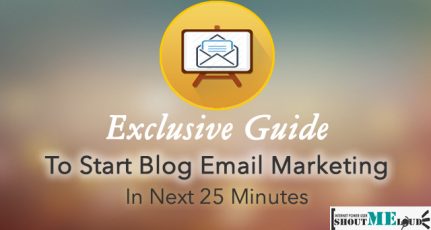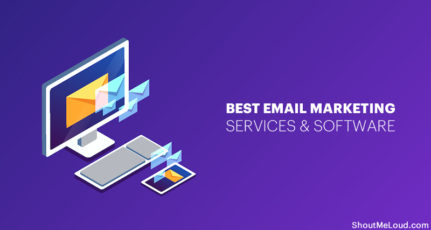Every single marketing or product blog suggests you start building an e-mail list. The number one method of doing this is by giving away an e-book, or a course, or something that is somehow valuable around your niche and in turn, capturing a reader’s e-mail information.
This is good advice because e-mail marketing works by distributing your content and making sales of your products.
But most of the advice stops there.
They talk about e-mail collection strategies, but do not go beyond that.
Today we’ll cover another area of e-mail marketing that is generally not covered:
The reasons your users are inactive.
Defining an inactive e-mail subscriber
An inactive e-mail subscriber has one or more of the following qualities:
- Subscribed to your blog, but has not interacted with your e-mails right after signing-up.
- Subscribed to your blog, but has not interacted with your e-mails in the past 6 months
- Subscribed to your blog, but has not interacted with your e-mails in the past 9 months.
- Subscribed to your blog, but does not click through.
If you have inactive e-mail subscribers, here are the 12 most common reasons why and their solutions.
Why are your e-mail users inactive?
Depending on the above information, the inactive subscribers have been defined in a particular way and each one has to be handled differently.
But the first part is in identifying why your subscribers are inactive.
Understanding this list will give you an idea of what not to do in the future and how you can rectify some of these problems right now.
Reason #1: Your subscribed users signed up for different content.
In a hurry to get subscribers, the content you put out convincing the user to subscribe may not have matched the kind of content you actually put out on a regular basis.
For example, a technology blog puts out this copy:
- “Get all the latest tech hacks every month”
But that blog actually sends out e-mails regarding:
- “Tech news”
The person subscribing to this e-mail campaign likely feels disconnected with the content and does not want to interact with these posts.
Solution:
Always make sure to explain clearly what your content covers and how it will help people.
Don’t ask people to subscribe to content that you are not going to publish or mislead them in any way.
One more thing you could do right after the user subscribes is send them a follow-up e-mail with your popular posts. This will help in communicating to the user that you do indeed publish the kind of content that they signed up for.
Reason #2: Your content is not appealing, useful, and/or shareable.
This happens to a lot of early bloggers and it is very unfortunate.
The quality of your posts is absolutely paramount!
It’s not about the number of posts, but rather the impact of the post.
The competition for blogs is extremely high; there are companies worth millions and millions of dollars who are competing with you to get every user’s attention. Maybe your website’s design or copy had convinced the user to join as a subscriber, but you weren’t able to convince them beyond your design with your content.
Solution:
When you are creating content, don’t think of it in terms of how many words you can throw down, or how many articles you can put out. You need to think of it in terms of how original it is and how useful it is to a user.
You also need to know if that kind of content does well.
This technique is called the Skyscraper technique and it comes from Brian Dean at the Backlinko blog:
- Spend your time in researching the top articles that are most shared with a tool such as Ruzzit (or you could also use Buzzsumo). These types of tools help in identifying the top performing content for every niche. You can search for the top content in your niche so that you are aware of the kind of content that resonates with your readers.
- After identifying the content, aim to make it better. You can make an infographic out of it, or make it a longer post, give it more data, or even create a video.
- Once you’ve created this content, mail it to similar blogs in your niche and ask them to cover it.
When you make content in such a way, it’s guaranteed to be useful and relevant.
Users will be excited to click through to your content.
Reason #3: Your readers just wanted the free lead magnet and nothing else.
Some blogs giveaway really valuable stuff as a lead magnet.
For those of you who don’t know what a lead magnet is:
- A lead magnet is a piece of content or software that is given away for free by the blog to entice the user to give their e-mail information (ie subscribe to an e-mail list).
Some people just download the free stuff and then ignore your e-mails because they have all they want.
Solution:
This happens sometimes and it can be frustrating. You take pains in creating your lead magnet and in the end you get an inactive subscriber.
- Check your marketing channel and your source of traffic.
You may be attracting the wrong crowd and spending money promoting/marketing your blog in the wrong channels. What happens is users come from these channels, look at the free lead magnet, download it, and they stop engaging.
These types of users are not highly motivated to execute on your content, they are just looking for a freebie.
The QUALITY of your leads are more important than the QUANTITY of leads.
Why do you think buying databases doesn’t work? They are not the right target market. They are not the people who want to engage with your content or product.
Knowing your audience is important. People who are inclined to pay for a product or engage with you are more motivated than a person who is looking for something free.
Getting high-quality users to your site increases your affiliate income and the quality of your site as a whole.
Also read: How To Setup a Lead Magnet within Blog Posts Using LeadPages
Reason #4: The topics you cover vary too much and aren’t focused.
In an attempt to attract a larger crowd, many blogs get into the habit of writing about different niches.
Although this may be good for traffic and building a large audience, it is not good for e-mail marketing. Your content may be covering many niches that the reader is not interested in.
This alienates a lot of users.
Solution:
The best way to go about making your content specific and to the point is content curation (similar to sites like Quora).
On the initial sign-up page, Quora asks you to choose your top ten favorite topics and curates your feed based on that.
Similarly, you could ask your users what content they would be interested in seeing. This helps in giving them the exact content they want and also gives you a blog that serves different kinds of people.

Reason #5: Your readers don’t know where to start.
You may be one of those blogs with a lot of posts and information. If in every e-mail you send about 10 to 15 posts that they “must read”, then you end up scaring the user away with this large amount of content.
It’s not possible to read 10 to 15 blog posts in one stretch and seeing that amount can be overwhelming.
Solution:
Make a list of your best content, order it based on a sequence, and send them consistent mails on a daily, or tri-weekly basis.
This way you are engaging with them consistently and directing them to your content with little steps. Sometimes readers don’t know where to start when they see a blog, and this is a good way to help them through that process.
Here is a good example of how ShoutMeLoud does it (outside the purview of e-mails, but you could use the same strategy through e-mail):

In the below image, you can see how Copyblogger is direct with their users about the amount of content they have on their site and gives their readers an immediate solution. As a blog with a lot of content, you have to guide your user to the right content. (Bonus points if you can order it!)

Reason #6: Your subject for the e-mails you send out is bad.
This is a very important aspect of e-mail marketing that isn’t taken seriously:
Bad titles.
If you were to compare these two titles, which do you think would have more clicks?
- Marketing tips on how to build your e-mail list.
- How I used this secret technique to grow my e-mail list by 1200% in a week!
A lot of blogging is about copy-writing that convinces people to take an action. It’s an important skill to have.
Solution:
Copy-writing is something that you need to learn. There’s one piece of advice that is doled out pretty regularly:
“The objective of any copy is to make the reader read the next line, and the line after that, and the line after that, and so on…”
- Make the reader curious.
- Make the reader feel that they are going to gain a lot of knowledge.
- Make the reader feel special in some way.
There are two things that you could do to make your e-mail copy better and get better CTRs (Click Through Rates):
- Get better at writing e-mail copy. This comes from training, practice, and learning from the best. If you sign up to the Copyblogger website, you get access to their collection of e-books that covers the whole gamut of copy-writing tips and how to’s.
- Test your copy and measure your results. Compare the CTRs of different e-mail headlines and see which ones perform better. This is important because this information is exclusive to your blog and specific to your audience.
Examples of excellent e-mail headlines you can take inspiration from:
“Should you say ‘Yes’ to something that looks like a great opportunity?”
-This copy suggests that your dilemma will be solved.
“Banned from Amazon – From $10,000 per month to $0”
-Perfect example of a copy about what not to do. People always want to learn from another’s mistakes.
“I’m embarrassed.”
-Making the reader curious.
“The SEO ranking factor you MUST master in 2016 (and beyond)”
Reason #7: Your e-mails are going to the Spam folder.
This is a problem faced by many bloggers and e-mail marketers. Their e-mails are pushed straight to the spam section by the e-mail provider’s filters.
This directly cuts out any sort of connection between your content and the reader. Your e-mails may be going to a subscriber who might buy your products, but it just isn’t reaching them.
Solution:
If you think your blog posts won’t go to the spam folder, then think again. This happens often.
Here are some solutions to avoid the “spam” label:
1. Don’t send all of your e-mails out at once.
The spam bots in e-mail service providers look out for mass sending of e-mails. Most spammers upload a database and then send e-mails to thousands of people all at once. This creates a trigger in the spam filter.
To avoid this, send your e-mails to separate lists, one after another.
Another reason is when readers receive e-mails, some of them might mark your mail as spam. When you send e-mails out to a lot of people and a bunch of them mark your mail as spam, then you create another trigger in the spam filter.
2. Always use a double opt-in while collecting e-mails.
A double opt-in, or a confirmed opt-in, guarantees that the user wants to be a part of your e-mail list. This is also confirming to the user that you are using a genuine e-mail ID that is active. If an e-mail ID is inactive for a long time, then the spam filters will blacklist your e-mails.
3. Try not to use words that are “spammy” or are used in phishing techniques.
E-mail service providers do not want e-mails to be too commercial or anything that seems like advertising. Apart from this, they want to avoid other scams and frauds. There are certain words which if used consistently can put you in the spam folder.
Here is a good list that covers different sets of words that are considered “spammy”:

4. Ask your user to “whitelist” your email address.
A lot of quality blogs do this and you should too.
When subscribing, guide your subscribers to mark your e-mail as “safe”.
You could take this to the next level by actually taking a screenshot of the process of whitelisting an e-mail and show it to your subscribers.
5. Don’t send too many e-mails in a day.
Sending multiple e-mails a day without a lot of CTRs definitely affects your SPAM levels. This is not good.
Make sure you send an e-mail only when necessary.
6. For transactions emails use Amazon or Mandrill
Transaction emails in terms of blogging are comment reply notification, user password & similar emails. For this, you should use a reliable service like Amazon SES Service.
Reason #8: They’ve subscribed to too many blogs; yours is just one of them.
This problem has more to do with the user than you.
A lot of readers subscribe to every blog they like and their inbox becomes filled with e-mails.
Result:
- Your e-mail gets lost in the crowd.
Solution:
You can’t really tell if a reader isn’t interacting with your e-mails because of this.
But, you can stand out by having really captivating content.
You can even try mocking these readers with things like:
- “You know, you can unsubscribe if you don’t like this stuff.”
- “You are stuck in 2010!”
Go on to tell them that they are missing out on this great content.
It doesn’t even matter if you lose a few subscribers here because it’s better to have a list that is active. But if you can win them back, you’ll have gained another active user.
Reason #9: Your e-mails are too self-promotional.
You might be over selling yourself.
Communication with e-mail is a relationship; it isn’t a marketplace where people see things and purchase.
A lot of bloggers, after having seen some initial success, just focus on promoting their courses and products.
People need to be convinced to purchase. You can’t spam them with overt promotions to make them purchase something.
Solution:
Always think of the value that you provide.
If you are providing immense value, people will WANT the products that you are selling.
The perfect example of this is SumoMe’s service. People share and promote their content because of the value they provide.
Make sure that your quality is high and people are waiting around for you to sell products.
If this isn’t the case, it’s guaranteed that your sales will taper off. In the end, it will always be you hunting the subscriber and asking them to make a purchase.
Reason #10: You send your e-mails at the wrong time.
Here’s another topic that is overlooked.
If your e-mails are getting sent at the wrong time, then your readers are not going to be reading your e-mails.
Research has been done by top bloggers that show people are more likely to open an e-mail at a certain time.
Why?
Solution:
A lot of blogs will tell you this time is the best, or this other time is the best. Well, maybe that’s the best time for them.
The best way to find out the best time for you is to test it. Other people’s data will not help.
1. Segment your audience based on location.
This will teach you two things:
- How your content is performing in a particular location (open rates, CTRs).
- The preferred time to read.
2. Push your e-mail out based on certain days and time.
Send your e-mails during different days of the week and at particular times.
Here is a simple spreadsheet that you can use for testing purposes:
Reason #11: The template of your e-mails are bad.
There are many ways to get your template wrong. The way you frame an e-mail may not have a flow, it doesn’t bring attention to anything, or is just too long.
Here is an example of a very long e-mail:

Solution:
As a rule of thumb, the content in the e-mail should aim at one thing:
- Making the subscriber click on a link which takes them to the intended website.
How do you achieve this?
- Do not write a long e-mail. People do not have time for something that will take them more than 2 to 3 minutes to read.
- Showcase the value of your content by bolding the content that you want readers to see the most.
- Have clear-cut, attractive calls to action.
Here is a sample template that you can use:
Hey < Name of the User >,
<Introductory greeting>
- Ex: Hope you are doing well! We have some awesome content for you today!
<Make a connection>
- Ex: Like many of you, I’ve been struggling with e-mail marketing and it has taken a toll on my blogging.
<Lay Out the Situation #1>
- Ex: It’s hard to build a list.
<Lay Out the Situation #2>
- Ex: It’s even harder to build a quality list!
<Showcase the Solution #1>
- Ex: But I’ve figured out a way to build an ultra high-quality e-mail list with active users who engage.
<Showcase the Solution#2>
- Ex: It’s so easy, I can’t believe no one is doing it.
<Tell them how they’ll benefit>
- Ex: Using this super simple method, I increased my CTR by a whopping 1200%!
<Give Call to Action>
- Ex: I explain this method in great detail over on my blog. Click here to read it and start implementing this powerful technique today! (Link)
Regards,
<Your Name>
<End>
Reason #12: Your user has moved on and the industry is dying.
Sometimes the content of your post just isn’t relevant anymore.
The user may have changed industries or they might have gotten a job which doesn’t give them the time to interact with your content.
Your industry may also be going through a massive change.
Solution:
Always make sure you are re-inventing your content to make it fresh.
Try to change with the times and not be stuck in an industry that is dying.
Remember, as a content creator, you can always pivot! Make sure you’re staying relevant.
It can be difficult to see a list of inactive e-mail users. But if you use these strategies, you will not only not face this issue, you will come to be one of the best e-mail marketers in the world!
Are you one of the best e-mail marketers in the world? Do you currently face these issues? Let us know in the comments!
Was this guide useful for you? Share it with your friends on Facebook, Twitter, and Google Plus!






Hello Mr. Kishen,
Awesome tips about subscribers and very useful information
Ya I agree email subject liner is a really an important thing. I have read many articles on how to make the best subject liner. But still, I’m not cleared. But your blog has relieved 90% of my doubts. I need to practice a lot then only I can achieve an excellent subject liner.
Going to follow all these process steps by step to make my email list active
Great information about Subscribers and very helpful information Mr. Kishen…
Good Article, but as I observed another reason is some of the emails will be shown in Promotions and Spam lists.
Hi Kishen,
An email list is the starting point of a bigger strategy – marketing. You have given a really well-rounded insight into the why’s and how’s. The donot haveaemail list as yet but gearing up for one soon. Your advice is goingbe really valuable when I implement that.
Thanks a lot for this one!
Thanks Kishen for your another great post about Email marketing.
Thanks for the insight, I now know what I’ve been doing wrong.
Thanks Dancun
That’s great. I found some of the tips are very interesting, Now I have fully idea how to get verified email subscriber.
Wow!This is probably the first article which has cleared all the points that should be taken care after starting collecting email list if one has to take his blog or website to a next level through email subscriptions.
And the best thing is that you have focused on the major points that usually new bloggers ignore or do it in the wrong way. This will help them in changing their mindset and will redirect them in the right way.
Hi Kishen.. Awesome article delivered.
Even I was facing the same issue… i have a long list of my subscribed users but was wondering why I am not able to convert.
Now will follow all your steps and will let you know about the results soon..
Thanks Mate for such a masterpiece.
keep helping
keep blogging